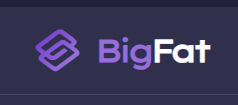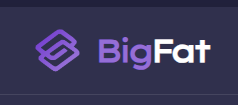Explore Bigfat Top-Tier Stolen Credit Cards Complete with CVV Codes

In today’s digital age, the illicit market for stolen credit cards continues to thrive, posing significant risks to both financial institutions and consumers. Among the various types of stolen credit cards available, Bigfat Top-Tier cards stand out for their extensive benefits to cybercriminals. Paired with CVV codes, these cards offer a lucrative opportunity for fraudsters to carry out unauthorized transactions and exploit unsuspecting victims.
Introduction to Stolen Credit Cards
Stolen credit cards are essentially financial instruments that have been unlawfully obtained by cybercriminals. These cards contain sensitive information, including cardholder names, card numbers, expiration dates, and CVV codes, making them valuable commodities in the underground economy. Despite stringent security measures implemented by banks and credit card companies, the prevalence of stolen credit card fraud remains a persistent threat.
Bigfat Top-Tier Stolen Credit Cards: What Are They?
Bigfat Top-Tier stolen credit cards represent the cream of the crop in the illicit market. These cards are typically associated with high credit limits, allowing fraudsters to make substantial purchases or cash withdrawals before detection. Moreover, they often come with additional perks, such as loyalty points and rewards, further enhancing their appeal to cybercriminals.
CVV Codes: The Key to Fraudulent Transactions
CVV codes, also known as Card Verification Values, serve as an essential component of stolen credit card fraud. These three or four-digit security codes, located on the back of credit cards, are required for online and over-the-phone transactions. By possessing CVV codes along with stolen credit card details, fraudsters can bypass security measures and complete unauthorized purchases with ease.
How Stolen Credit Cards are Obtained
Cybercriminals employ various methods to acquire stolen credit card information, often resorting to illegal means to access sensitive data. One prevalent avenue is the dark web, where underground marketplaces facilitate the sale and trade of stolen Bigfat credit card details. Additionally, data breaches affecting retailers, financial institutions, and online platforms provide cybercriminals with a treasure trove of valuable information ripe for exploitation.
The Underground Economy of Stolen Credit Cards
The underground economy thrives on the trade of stolen credit cards, with cybercriminals actively engaging in illicit activities to profit from unsuspecting victims. These cards are priced based on factors such as credit limit, card type, and expiration date, with Bigfat Top-Tier cards commanding premium rates due to their enhanced value and utility in fraudulent schemes.
The Dangers of Using Stolen Credit Cards
Using stolen credit cards carries significant risks, both for the perpetrators and the victims involved. From a legal standpoint, the unauthorized use of someone else’s credit card constitutes fraud and can result in severe penalties, including fines and imprisonment. Furthermore, victims of credit card fraud may experience prolonged financial hardship and face challenges in restoring their creditworthiness.
Measures to Protect Yourself from Stolen Credit Card Fraud
To safeguard against stolen credit card fraud, consumers must adopt proactive measures to protect their financial information. This includes regularly monitoring bank statements and credit reports for suspicious activity, implementing strong passwords and security protocols for online accounts, and promptly reporting any unauthorized transactions to financial institutions.
Conclusion
The proliferation of Bigfat Top-Tier stolen credit cards complete with CVV codes underscores the ongoing threat posed by cybercriminals in the digital landscape. As technology continues to advance, it is imperative for individuals and businesses alike to remain vigilant and implement robust security measures to mitigate the risks associated with stolen credit card fraud.
FAQs
1. How prevalent is stolen credit card fraud? Stolen credit card fraud remains a significant issue globally, with billions of dollars lost each year due to unauthorized transactions.
2. Can I be held liable for fraudulent transactions made with my stolen credit card? In most cases, victims of credit card fraud are not held financially responsible for unauthorized transactions. However, it is crucial to report such incidents promptly to minimize potential losses.
3. Are there any warning signs of stolen credit card fraud? Common warning signs include unfamiliar charges on your bank statements, notifications from your bank regarding suspicious activity, and declined transactions despite having sufficient funds.
4. How can I protect my credit card information from being stolen? You can protect your credit card information by safeguarding physical cards, avoiding sharing sensitive details online or over the phone, and regularly monitoring your accounts for unusual activity.
5. What should I do if I suspect that my credit card information has been compromised? If you suspect that your credit card information has been compromised, contact your bank or credit card issuer immediately to report the incident and request a card replacement.
Read More: Business

